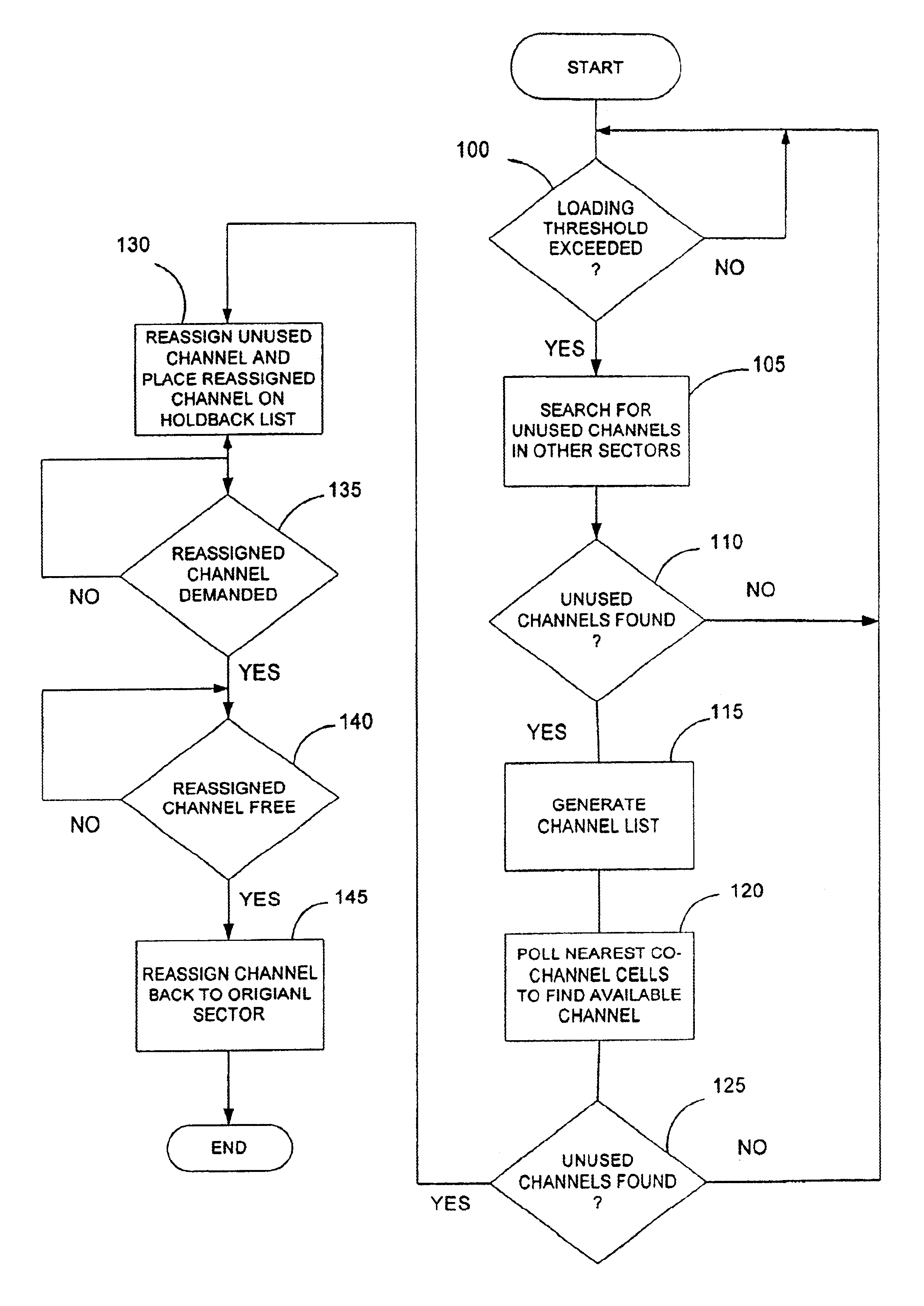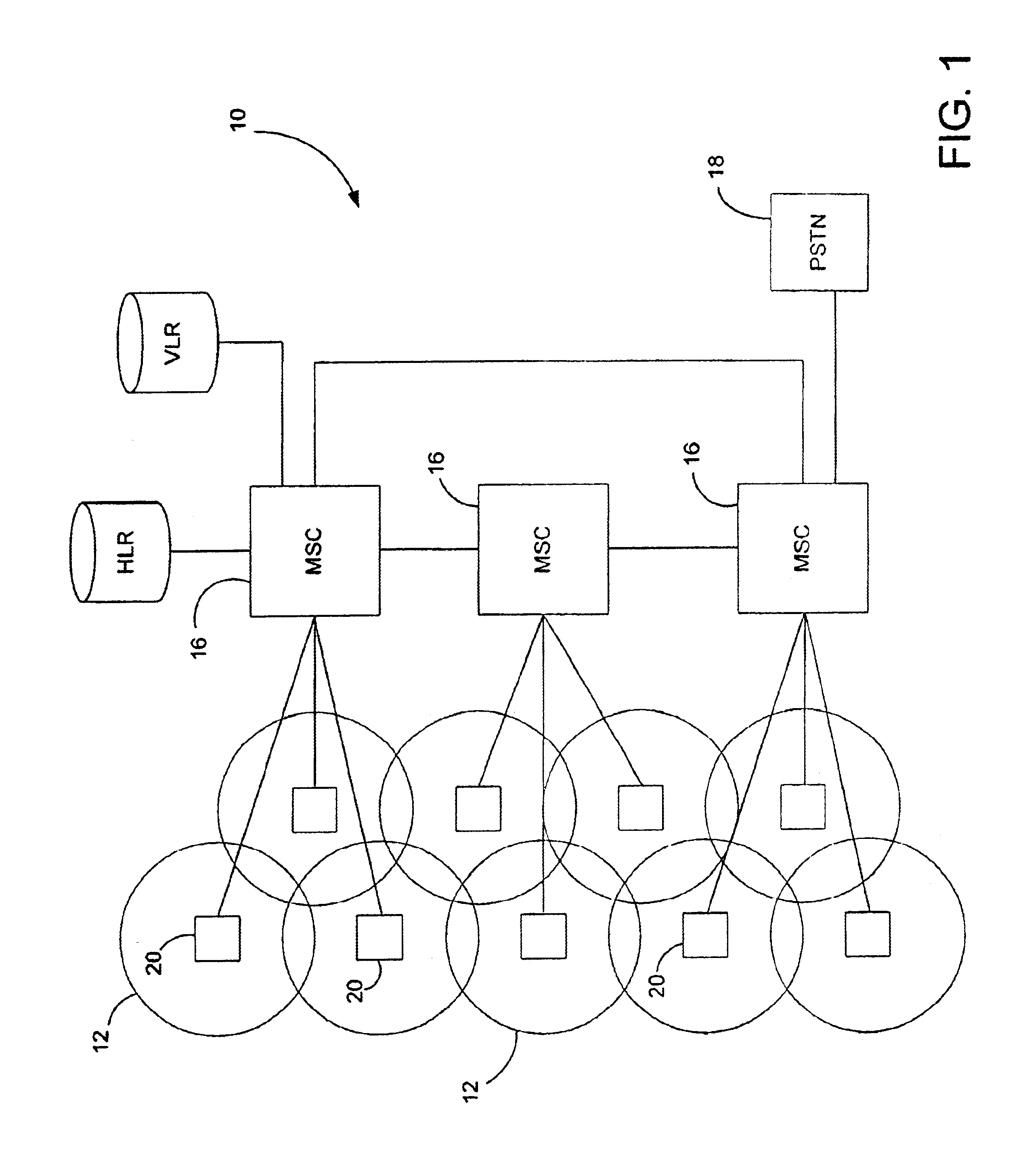Dynamic channel allocation in a sectored cell of a cellular communication system
a dynamic channel and cell technology, applied in substation equipment, network traffic/resource management, network topologies, etc., can solve the problems of reducing the spectral efficiency of the cellular network and no available channels, and achieve the effect of gaining spectral efficiency
- Summary
- Abstract
- Description
- Claims
- Application Information
AI Technical Summary
Benefits of technology
Problems solved by technology
Method used
Image
Examples
Embodiment Construction
[0015]The invention is a dynamic channel allocation scheme for a cellular communication network. FIG. 1 is a schematic diagram of a cellular communication system indicated generally by the numeral 10. The cellular communication system comprises a plurality of contiguous cells 12 that provide radio coverage throughout the network. Each cell 12 is served by a base station 20 that provides radio coverage to mobile phones within that particular cell. The base stations 20 are connected to a Mobile Services Switching Center (MSC) 16. Typically, a cellular network will include many MSCs 16. The function of the MSCs 16 is to connect calls which either originate or terminate within the cellular communication system. At least one MSC 16 in the network is connected via a gateway to the Public Switched Telephone Network (PSTN) 18. This allows users of the cellular communication system 10 to place calls to and receive calls from persons connected to the PSTN 18.
[0016]Within the cellular communic...
PUM
 Login to View More
Login to View More Abstract
Description
Claims
Application Information
 Login to View More
Login to View More - R&D
- Intellectual Property
- Life Sciences
- Materials
- Tech Scout
- Unparalleled Data Quality
- Higher Quality Content
- 60% Fewer Hallucinations
Browse by: Latest US Patents, China's latest patents, Technical Efficacy Thesaurus, Application Domain, Technology Topic, Popular Technical Reports.
© 2025 PatSnap. All rights reserved.Legal|Privacy policy|Modern Slavery Act Transparency Statement|Sitemap|About US| Contact US: help@patsnap.com



